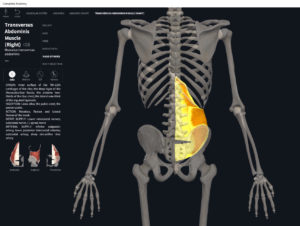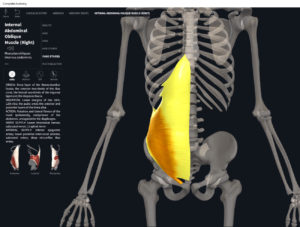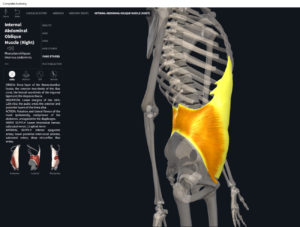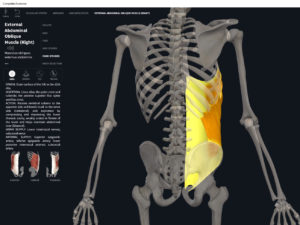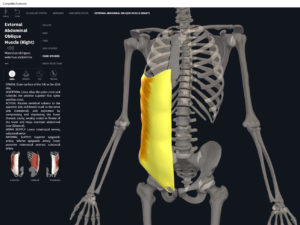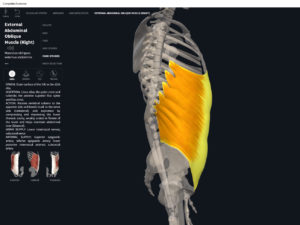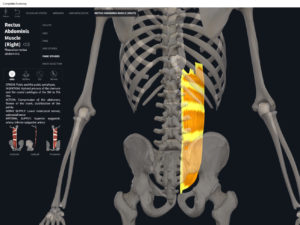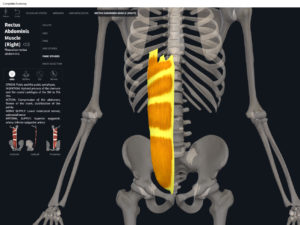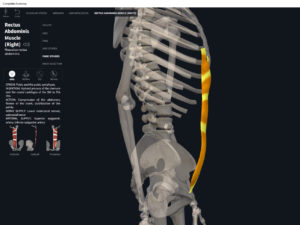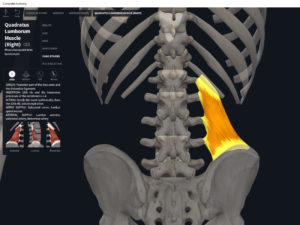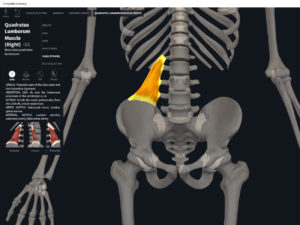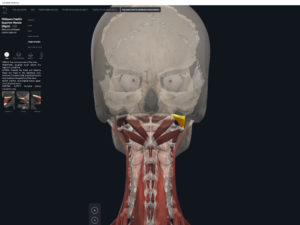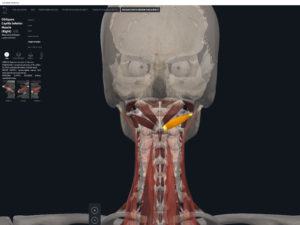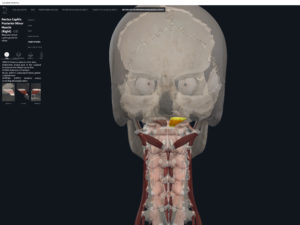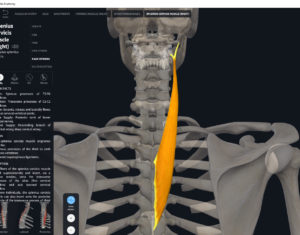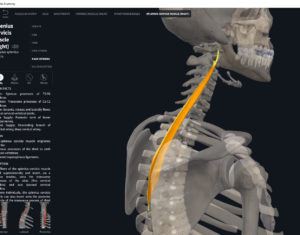Anatomy & Physiology: Muscles—Transverse Abdominis.
Structure.
- Origin: iliac crest, inguinal ligament, lumbar fascia, and cartilages of ribs 5-10.
- Insertion: xiphoid process, linea alba, and pubis.
Function.
- Concentric action: increase intra-abdominal pressure; support abdominal viscera.
- Reverse mover action: increase intra-abdominal pressure; support abdominal viscera.
- Eccentric action: controls/restrains/slows abdominalpelvic cavity expansion.
- Isometric action: stabilization of lumbo-pelvic hip complex (synergistically with internal oblique, multifidus, and deep erector spinae).
- Innervation: thoracic spinal nerves T8-T12 iliohypogastric nerve, ilioinguinal nerve.
- Arterial supply: subcostal and posterior intercostal arteries, deep circumflex iliac artery, inferior epigastric artery.
Clinical Significance.
More.
References
Biel, A. (2015). Trail guide to the body: A hands-on guide to locating muscles, bones and more.
Cedars-Sinai. (2018). Vertebrae of the spine. Retrieved from https://www.cedars-sinai.org/health-library/diseases-and-conditions/v/vertebrae-of-the-spine.html
Clark, M., Lucett, S., Sutton, B. G., & National Academy of Sports Medicine. (2014). NASM essentials of corrective exercise training. Burlington, MA: Jones & Bartlett Learning.
Jenkins, G., & Tortora, G. J. (2012). Anatomy and Physiology: From Science to Life, 3rd Edition International Stu. John Wiley & Sons.
Muscolino, J. E. (2017). The muscular system manual: The skeletal muscles of the human body.
